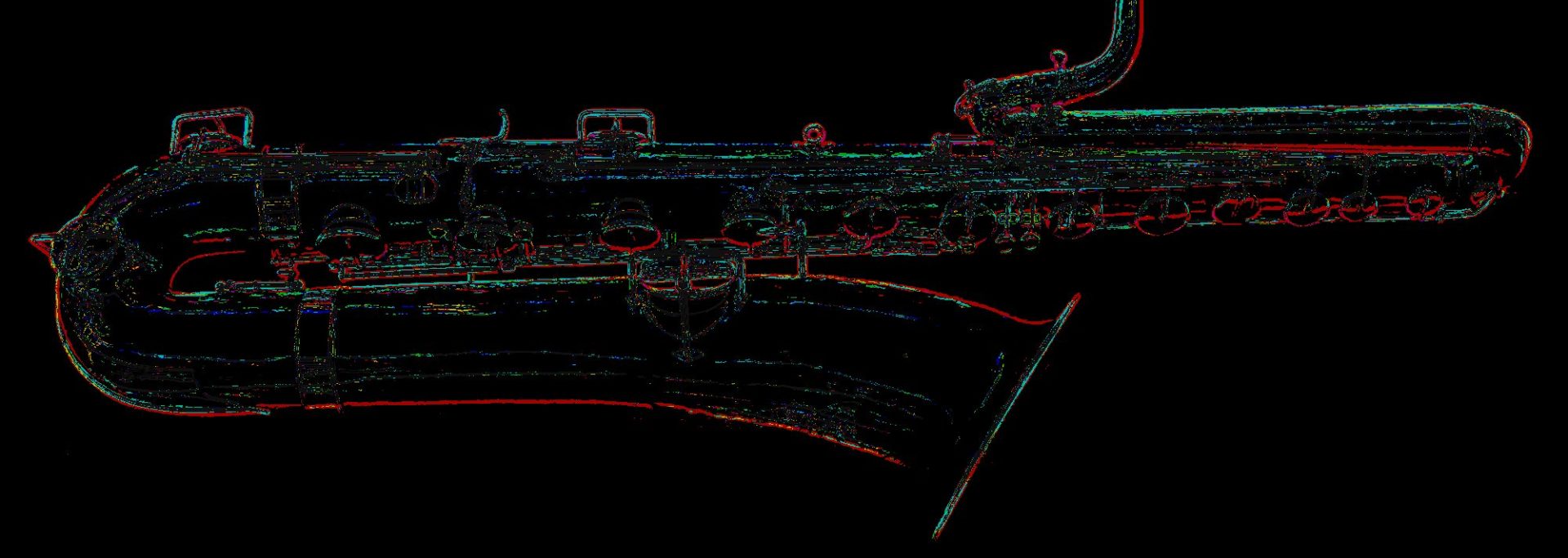Do you know when the bis Bb key was invented? Do you know who invented it?
Selmer Mark VI Soprano, Serial # 266XXX
If you said the bis key was invented circa 1930s, you would be correct. If you said that Selmer, Keilwerth, or some other European, saxophone house employee invented it, you would be incorrect. (I just faked out with the Selmer photo. Sorry ’bout that.) 😉
The inventor of the bis Bb key was a man from Arlington, Massachusetts, by the name of Edward V. Powell. Now if that name sounds familiar to you, it might be because of Powell flutes—and yes there is a connection. Edward V. was the son of Verne Q. Powell, the founder of Powell Flutes.
On August 21, 1929, Edward V. Powell applied for a patent for what he described, as “a novel B and B flat mechanism for saxophones.” He goes on to say:
There are five ways of getting B flat on a saxophone, all of them requiring the use of two fingers engaging two keys or one finger engaging two keys. That with which this invention is concerned is the one which is accomplished by the forefinger of the left hand operating the C and B stoppers.
Source: Google Patents
A couple of the diagrams the he provided in his patent application, look very familiar to us now…
Source: Google Patents
Notice that Powell didn’t include a front F key in his drawings. I’ll have to do some more research and find out exactly who patented that key, and in what year.
As far as the bis Bb key that is shown in the above patent, it was incorporated into the Buffet-Powell saxophones that were built from approximately 1930-1939.






Hello Helen,
I got a Powell-Buffet tenor in my collection, but is missing the original neck with two octaves. If you know of a spare one……… 😉
Regards
Bo
Hi there Bo.
Wow! You do get some strange stuff in your collection my friend.
I will certainly let you know if I happen to come across an original Powell-Buffet tenor neck. I’m sure you’ve already posted this request to SOTW. That’s where I’ve seen the greatest concentration of Powell owners in the past.
Good luck on your quest.
Oh, I don’t suppose Gloger makes one? Nah, that would be too easy, wouldn’t it. 😉
Neat patent! But this is not for the bis key, which was invented in 1887 and is present on horns going back much farther than the 1920s (think True Tones- they have bis keys, right?), but for an “improvement” upon the bis key.
This is a patent for a type of bis key that only needs the bis key *alone* pressed to play Bb. Read a little farther into the abstract and it is pretty clear, and by looking at the diagram provided you can see that the mechanism is very different from the bis key as we know it.
Hey there Matt.
Duh… 😳
My neurologist did say my Rx. would make me stupid. I just didn’t believe her, and most days I can pass for slightly above average intelligence. Then, every once in awhile, something as blatant as this happens. :shit:
Of course I have horns from the 1920s, and of course they have bis Bbs. What was I thinking… Or not… :loco:
Thanks for catching it Matt! Nice to see you here again…helen
Paul Evette in 1899, U.S. Pat. No. 638,385. Commonly known today as the Front F Key or Auxiliary high F key.
I found this referenced in someone else’s modern patent, listed here:
http://www.freepatentsonline.com/8129605.html
Apparently innovation continues on saxophones to this day. Now where’s the “as loud as the drummer” key? 😉
As for the patented one-touch bis key, it would seem to me to be a solution in search of a problem. Keeping the beast in adjustment must have been “interesting”, like that of fork Eb. (As in the Chinese curse, “may you live in interesting times”.) Most people are unlikely to lift their finger from the primary touch and would probably cover both of them the way they did before and still do now.
I bet the Briccialdi Bb mechanism (the extra thumb lever) on flute served as inspiration for this. Obviously the key could not be assigned to the left thumb, but Powell probably wanted a similar effect — one key closes two holes.